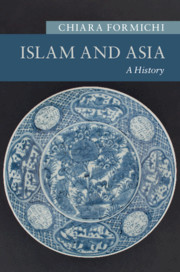Book contents
- Islam and Asia
- New Approaches to Asian History
- Islam and Asia
- Copyright page
- Dedication
- Contents
- Figures
- Maps
- Boxes
- Sources
- Preface
- Acknowledgments
- Note on Transliteration and Foreign Terms
- Maps
- Introduction
- 1 Islam across the Oxus (Seventh to Seventeenth Centuries)
- 2 Becoming Muslim (Seventh to Eighteenth Centuries)
- 3 Networks and Renewal (Thirteenth to Nineteenth Centuries)
- 4 Pan-Islamism and Nationalism (Nineteenth and Twentieth Centuries)
- 5 Muslims in the Nation-State (1940s to 1960s)
- 6 New Imaginations of Piety (1960s to 1990s)
- 7 Islam as Resistance
- 8 De-centering Islamic Authority
- 9 Studying Asia and Islam
- Glossary
- Notes
- Index
- New Approaches to Asian History
- References
6 - New Imaginations of Piety (1960s to 1990s)
Published online by Cambridge University Press: 16 April 2020
- Islam and Asia
- New Approaches to Asian History
- Islam and Asia
- Copyright page
- Dedication
- Contents
- Figures
- Maps
- Boxes
- Sources
- Preface
- Acknowledgments
- Note on Transliteration and Foreign Terms
- Maps
- Introduction
- 1 Islam across the Oxus (Seventh to Seventeenth Centuries)
- 2 Becoming Muslim (Seventh to Eighteenth Centuries)
- 3 Networks and Renewal (Thirteenth to Nineteenth Centuries)
- 4 Pan-Islamism and Nationalism (Nineteenth and Twentieth Centuries)
- 5 Muslims in the Nation-State (1940s to 1960s)
- 6 New Imaginations of Piety (1960s to 1990s)
- 7 Islam as Resistance
- 8 De-centering Islamic Authority
- 9 Studying Asia and Islam
- Glossary
- Notes
- Index
- New Approaches to Asian History
- References
Summary
This chapter stresses how Islamic activist ideologies travelled from one country to another, following multiple geographical vectors and shaping local envisioning of piety beginning in the 1980s. The influence of Egypt’s Muslim Brotherhood in the establishment and political assertion of Malaysia’s Islamist party (PAS), the impact of Iran’s revolutionary intellectuals among Indonesia’s activists, the Saudi World League’s interest in fostering connections in China, and the booming of relations across the border between former Soviet Central Asia and Pakistan all show how the re-imagination of piety that occurred in the second half of the twentieth century across Asia had roots in phenomena that built on the idea of the transnational umma as a global community of belonging, but it was also “hyper-national” in nature. These case studies are useful for understanding how international networks of piety found fertile soil to implant themselves in Asia as Muslims there became disenchanted with the secularist experiment.
Keywords
- Type
- Chapter
- Information
- Islam and AsiaA History, pp. 176 - 205Publisher: Cambridge University PressPrint publication year: 2020

